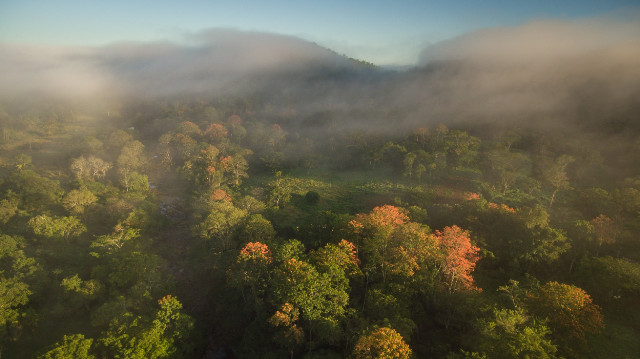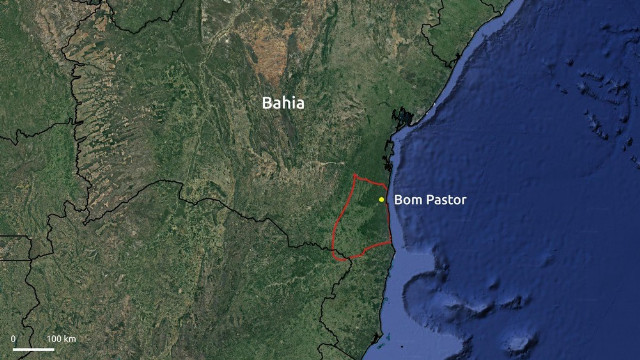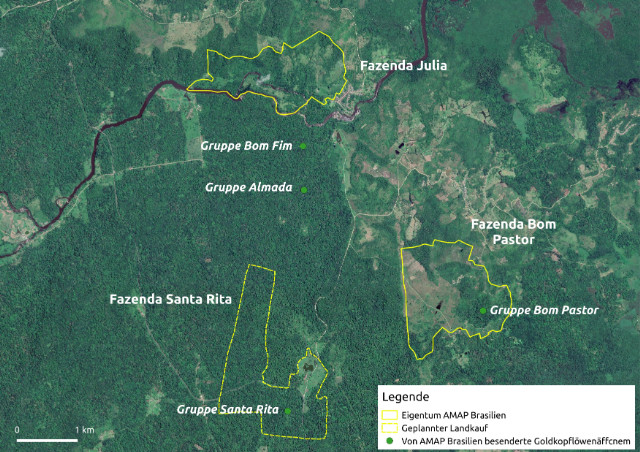ALMADA MATA ATLÂNTICA PROJECT
AMAP in the Mata Atlântica
The Mata Atlantica, the Atlantic Forest in Brazil, is considered one of the most species-rich ecosystems on our planet. New species are still being discovered. It once covered many millions of hectares along the Brazilian coast. But today almost two thirds of the population live in the distribution area of this rainforest. According to estimates, this causes that only between seven and twelve percent are still intact. Those remaining areas often exist as isolated forest islands and are way too small and too far apart from each other to provide sufficient habitat for the immense abundance of animal and plant species. In addition, the destruction by us humans continues to progress incessantly because of the need for commodities and space. In the field of action of AMAP Brazil, a relatively large number of forest relics have survived due to near-natural cocoa cultivation (the cocoa forest is called ‘cabruca’). However, a changing climate and increasing population pressure are also creating an urgent need for action here.

AMAP zum Schutz des Ökosystems durch Langzeit-Monitoring (EAI)
Die Mata Atlantica, der atlantische Regenwald, gehört zu den am stärksten bedrohten Tropenwäldern der Erde. In Bahia, an der Kakaoküste Brasiliens, ist es nur der einzigartigen Form des Kakaoanbaus zu verdanken, dass die Biodiversität der Mata Atlantica erhalten werden konnte. Die Ecological Assessment Initiative, das EAI-Projekt ist ein Langzeit-Monitoring um die langfristigen Effekte von Landnutzungsänderungen auf Ökosystemdienstleistungen und Biodiversität in der Kakaoanbauregion Brasiliens zu quantifizieren. Daraus werden sozioökonomische Folgen für die Region abgeleitet und Handlungsempfehlungen für lokale Akteure erstellt, um die Biodiversität zu erhalten und den nachhaltigen Kakaoabbau zu fördern. Die erste Projektphase verläuft über einen Zeitraum von drei Jahren. Möglich wird dieses Projekt durch eine Kooperation zwischen dem regionalen Naturschutz-Akteur AMAP, der Westlake Universität und der UESC. Das EAI Projekt hat den Charakter einer Plattform, dessen Ziel es ist, Kooperationspartnern Personal und Infrastruktur zur Verfügung zu stellen, und so weitere Projekte zu ermöglichen die einen Beitrag zum Erhalt der Biodiversität der Mata Atlantica leisten.

AMAP for the protection of the golden-headed lion tamarin
The golden-headed lion tamarins can only be found here at the coast of Bahia and are classified as endangered (IUCN). In the field of action of AMAP, the distribution area of the golden-headed lion tamarin, currently there are still 6,000 to 15,000 individuals.

In the coastal rainforests of Ilhéus, AMAP Brazil is doing research with several family groups of the monkeys. To find the groups in the forest, radiotelemetry collars are attached on a regular basis to individual animals as part of AMAP Brazil’s research projects. One of the four families of monkeys lives in the forests of the association’s own Fazenda Bom Pastor, the headquarters of AMAP Brazil. The other three groups live in the forests of neighboring farms, including the Fazenda Santa Rita, for whose purchase AMAP Germany is currently helping to raise funds. In a recently started dissertation project, AMAP Brazil is having the current distribution area of the monkeys mapped in order to update the data, some of which are several decades old, and, on the basis of the new information on population and distribution, to ensure the survival of the golden-headed lion tamarin for the future.

Last year, the monkeys that have been radio-collared by AMAP Brazil were visited by the BBC and the Japanese state television, giving the monkeys’ family associations a much-needed audience beyond Brazil. Two of AMAP Brazil’s thirteen full-time employees in the project team on site form the golden-headed lion tamarins team: Bila, who has been researching the monkeys for more than 20 years, and Vicente, who will map the current distribution area of the golden-headed lion tamarins over the next three years as part of his dissertation. Dr. Leonardo de Carvalho Oliveira, Professor at Rio de Janeiro State University and leading expert in the field of the golden-headed lion tamarin, is responsible for the scientific supervision.


